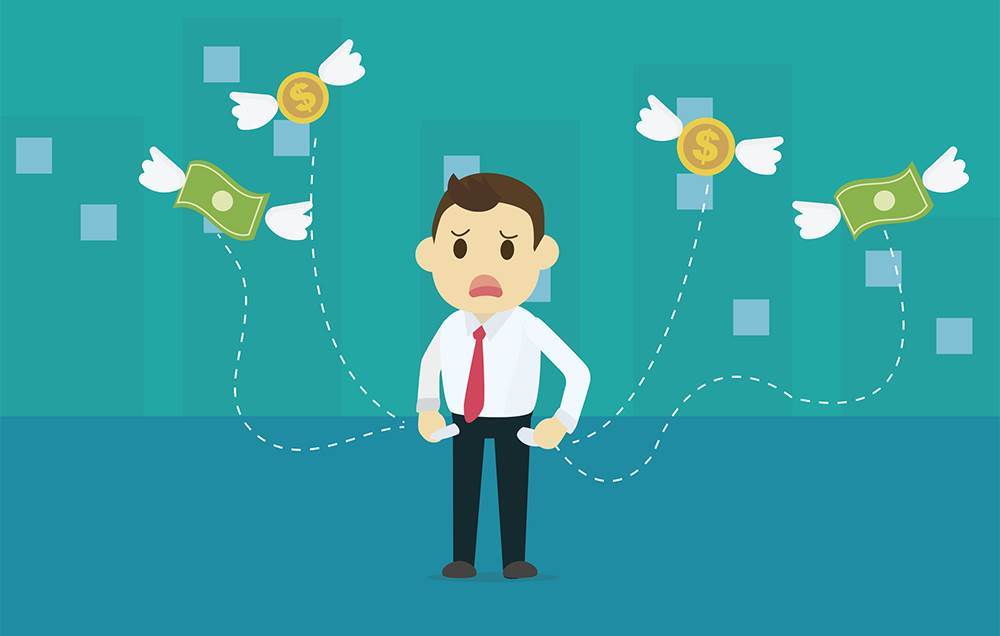Science reveals how to overcome six common compulsive behaviors. Hint: It's not about willpower.
"I've done it since I was a kid." "I guess I'm just not going to change." If there's one thing we know about habits—our routine patterns of behaviour—it's that they're tough to break. That's because whether they're helpful (brushing our teeth every night before bed) or potentially harmful (biting our nails), they become hardwired into our brains. "Something acts as a trigger, you react with a certain behavior, you get a reward and you repeat it," says neuroscientist Judson Brewer. All habits, good or bad, follow this loop. And the stronger the loop is, the harder it is to break.
To understand how a habit forms, picture two areas of the brain. In the limbic system, the basal ganglia help us do things like drive a car and tie our shoes. The prefrontal cortex is the key to solving complex problems and making intentional decisions. By design, the uberefficient basal ganglia make many of our daily tasks automatic, freeing up the prefrontal cortex for learning new things (and overriding old tendencies). The hitch? The brain clings to its habit loops—which means changing a habit requires much more effort than acting without thinking does.
But we're far from stuck. "We now know that at almost every level, the brain can modify itself," says neuroscientist Adam Gazzaley.
Until recently, many psychologists preached willpower (I will not bite my nails) and deprivation (I'm not buying anything I don't need for a month). That rigidity has been supplanted by an approach that outsmarts the brain's own wiring. Whether by eliminating a trigger or providing an alternative reward, you can nudge the brain into different behaviour. Brewer says, "The idea is to hack the system."
Some habitual behaviour needs treatment by a medical professional. But for everyday habits, hacking the loop makes the transformation gentler and the result more likely to stick. Here's how to bust six common behaviours: overspending, constant cell-phone checking, hair twirling, nail biting, gum snapping, and chronic lateness.






Photograph by Getty Images
Overspending
TO BREAK IT: Feel grateful.
For as long as people have shopped, some people have shopped too much in response to certain triggers, whether the anxiety of a life transition or the stimulation of shiny new things. The object—and the thrill of finding it—is a clear reward.
"But the Internet has upped the pace dramatically," says psychologist Kit Yarrow. As Gazzaley says, brains are made to love stimulation—and now shopping is so accessible and immediate that we can reward ourselves with the tap of a finger. The problem? "Our brains haven't caught up with our new way of spending and the way it speeds up the process of forming a shopping habit," Yarrow says. So habit loops form much faster than they did in the past and become much stronger, too.
Deleting apps from our phones and unsubscribing from e-mail promotions can temporarily help, but to bring about a more permanent change, deepen your sense of gratitude. When you impulsively buy something, it provides emotional relief, Yarrow says. You can replace that reward with another one—feeling consciously aware of and thankful for what you already have. In fact, research shows that gratitude can rein in impulsivity.
Photograph by Getty Images
Cell-phone checking
TO BREAK IT: Take away the trigger.
A recent survey revealed that people swipe, click, and tap their smartphones an average of 2,617 times a day—that's almost a million touches a year. Gazzaley has a theory about why we're so hooked: Imagine a squirrel searching for nuts. "The way animals forage for food, we now seek information, which we view as a reward," he says—and it wouldn't be a problem if technology didn't give us unprecedented access to that information. "When unlimited patches of information are literally on you, in your pocket or on your wrist," says Gazzaley, "it's too easy to keep seeking out more." The trigger for your habit is constantly present—and the habit is constantly reinforced.
The solution is to remove the trigger. One way is by relocating your phone—because a phone you can't access is a phone you can't swipe. "Put it in your bag and zip it shut so you won't peek at it," Gazzaley says. "Don't charge it in your bedroom if it's the last thing you check before falling asleep."
Turning off notifications can also help. "Every ping is a trigger to switch to a new source of information to feed the brain," Gazzaley says, "and our brains can't resist the novelty." Remove the pings and start checking the latest headlines on your terms.
iStock
Hair twirling
TO BREAK IT: Occupy your hands.
The difference between messing with your hair—twirling or looking for split ends—and the hair-pulling disorder called trichotillomania is a matter of degree, says psychologist Suzanne Mouton-Odum. "Hair pulling often results in hair loss and can lead to noticeable bald patches and considerable emotional, psychological and social distress," she says. But playing with your hair isn't a disorder.
The benign variety can be set off by many triggers: You do it during mindless activities. You like the way hair feels between your fingers. You're bored or nervous. You constantly wonder if your hair is out of place.
And while the remedy depends on the reason, there's one solution that often works: Occupy your hands with something else, especially in situations when you're prone to twirling. You might clasp your hands or squeeze a stress ball. "Try applying thick lotion all over your hands," says Mouton-Odum. "Most women don't want to put them in their hair after that."
Photograph by Getty Images
Nail biting
TO BREAK IT: Be curious.
Amanda Mascarelli, 43, a mother of three, has done everything she can think of to stop biting her nails: She's painted them with awful-tasting polish, snapped a rubber band on her wrist, met with a therapist, prayed. "I even signed up to sell nail wraps to help me overcome the habit," she says. "I failed miserably."
Nail biting is considered a body-focused repetitive behaviour, an umbrella term for behaviours that damage appearance or cause injury. The way to end it once and for all, Brewer says, is by mindfully focusing on the present moment.
Mindfulness "hacks" the brain's default circuits, he says: It makes you aware, on a conscious level, of what your lower, habitual brain is up to. Once you're truly cognisant of the habit loop, you're better equipped to alter it. "Future behaviour is based on the outcomes of current behaviour," Brewer says. "And since we're driven by rewards, you need to find something in the moment that feels better than biting your nails."
His suggestion: Let yourself be curious about what you're doing and why. Nail biting might relieve stress or act as a soothing mechanism, as it does for Mascarelli. But it can be embarrassing and painful, as you'll discover when you focus on it. "In the end, being curious is more fulfilling than biting your nails," Brewer says.
Photograph by Getty Images
Gum snapping
TO BREAK IT: Change "can't" to "don't."
"It's not a diagnosis, and it's not pathological behaviour, but it can be annoying to some people," Mouton-Odum says of the habit of snapping chewing gum. Snappers likely have a higher-than-average need for movement and auditory stimulation, she says.
The first step to breaking the habit loop is to notice it, says clinical psychologist Ellen Hendriksen. "Often, simply monitoring a behaviour can be enough to chip away at it," she says. "That can be as simple as keeping a running tally on a sticky note stuck to your desk."
Changing the language you use—substituting I don't for I can't—can also help curb the urge, says expert on self-control Vanessa Patrick. When you say, "I can't snap my gum," you're depriving yourself and sending a signal that you're not quite in control. But using a refusal strategy—"I don't snap my gum"—means you're in the driver's seat.
iStock
Chronic lateness
TO BREAK IT: Time yourself.
Julie (who asked us not to use her last name), 36, has been running 15 minutes late for as long as she can remember. And she's not alone: Research shows that 20% of people are chronically tardy. "I always think I can accomplish more with the time I have—and I generally have no idea how much time I've spent," Julie says. Added to that is her need to complete any task—whether folding laundry or writing an e-mail—at that moment. "I can't bring myself to let things go until later," she says.
Because people who struggle with lateness often have an inaccurate sense of time, the key to breaking the habit is to get a concrete sense of how long your tasks actually take. Time yourself getting ready in the morning, driving to appointments, and doing other common tasks, and write down how much time you spend on them. Add extra time for obstacles like traffic, and establish a specific plan for your day.
In her research, Patrick has found that a "just do it" strategy—creating a plan, then following it without thinking—can be very effective. Often, the more you deliberate or juggle tasks, the later you are. "Making a plan removes the options," she says. It replaces your automatic basal ganglia response, outsourcing a portion of the habit loop—and outwitting it.









